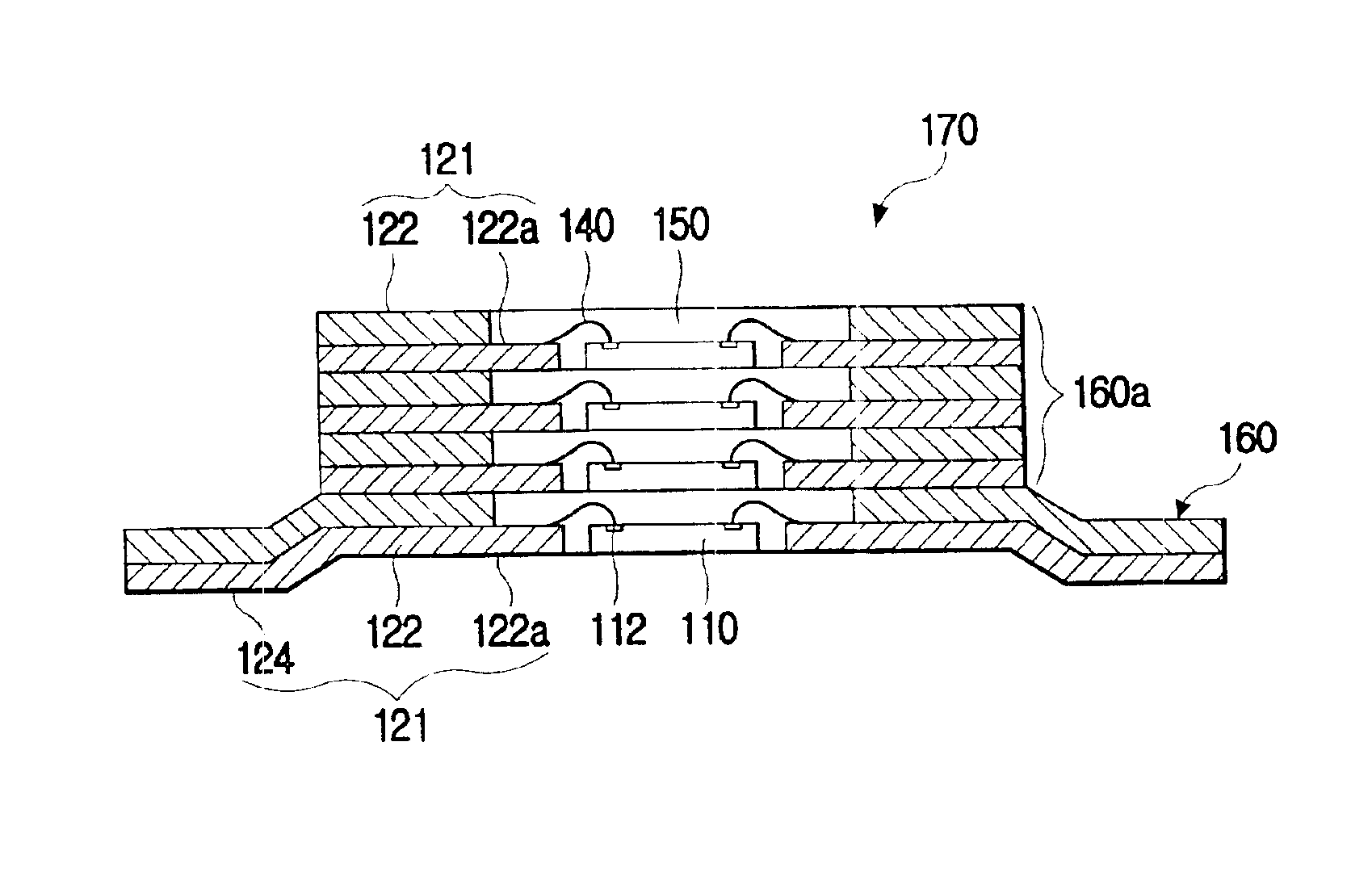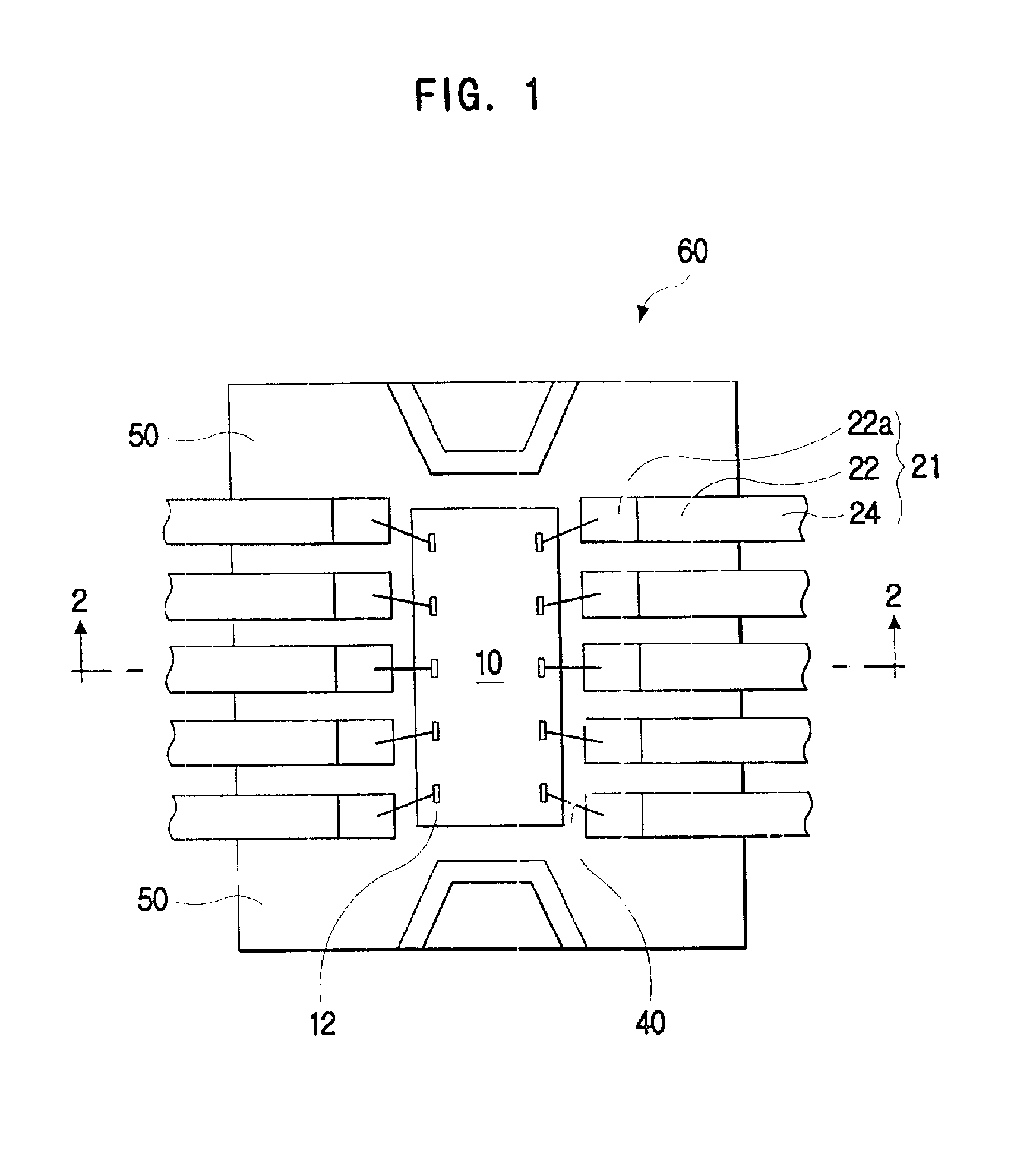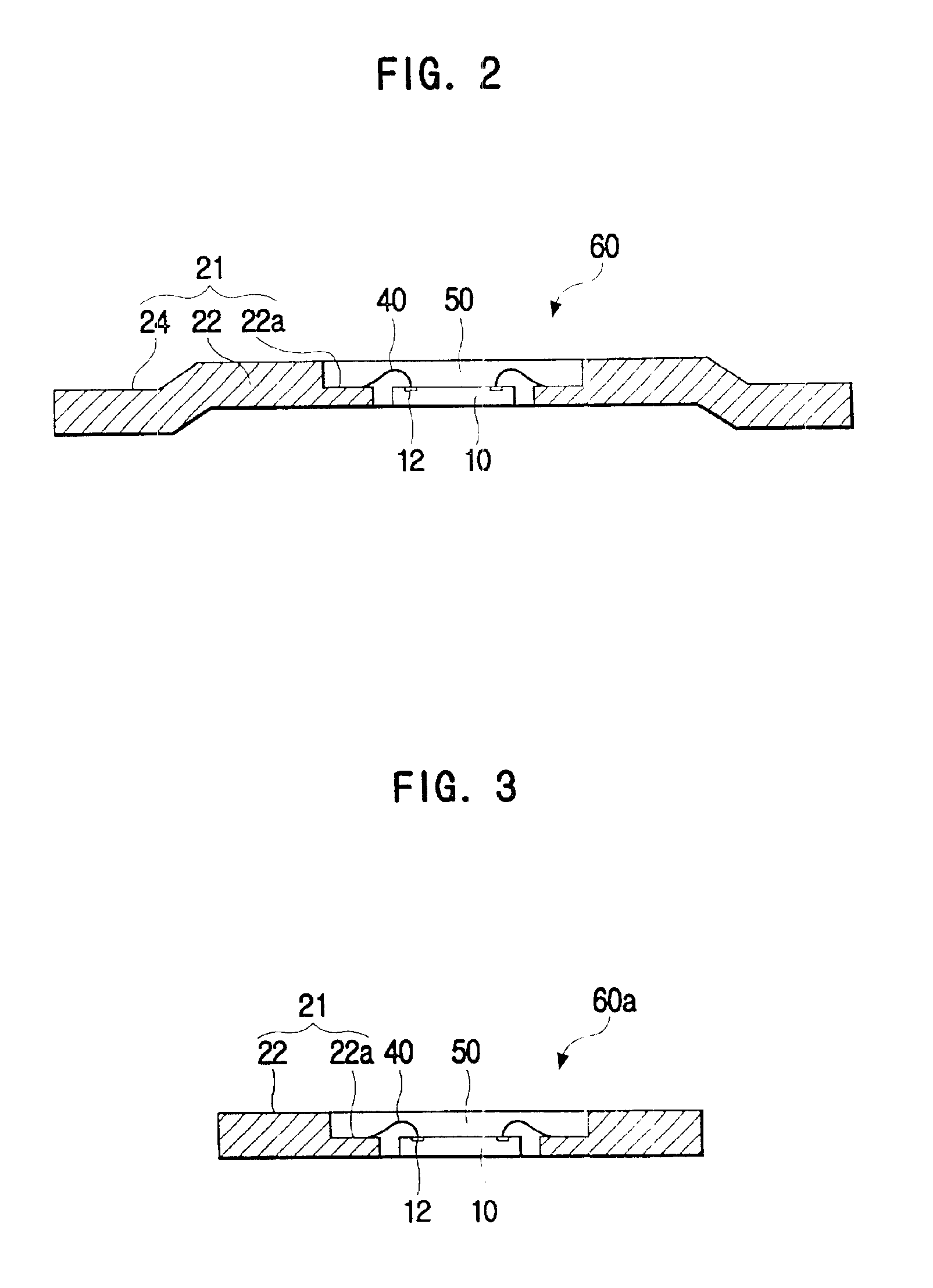Thin stacked package
a technology of integrated circuits and stackable structures, applied in the direction of semiconductor devices, semiconductor/solid-state device details, electrical apparatus, etc., can solve the problems of mcm facing poor yield, bare silicon chips for mcm cannot be tested before the chips are packaged, and the entire module fails when tested, so as to achieve the effect of eliminating additional leads deformation and/or treatment, and increasing the yield of stacked packages
- Summary
- Abstract
- Description
- Claims
- Application Information
AI Technical Summary
Benefits of technology
Problems solved by technology
Method used
Image
Examples
first embodiment
Preferred embodiments of the present invention will be described below with reference to the accompanying drawings. FIG. 1 is a plan view of a semiconductor device package 60 according to the present invention. FIG. 2 is a cross-sectional view, taken along the line 2—2 of FIG. 1, of the package having a plurality of outer leads protruding from the package body and bent in a gull-wing shape.
Referring to FIGS. 1 and 2, the semiconductor device package 60 comprises a semiconductor chip 10, a plurality of leads 21 electrically connected to the semiconductor chip 10 via a metal wire 40, and a package body 50 encapsulating the semiconductor chip 10 and the metal wire 40 with a resin compound. For clarity, FIG. 1 shows only a partially completed package body 50 in order to illustrate leads 21, semiconductor chip 10 and metal wires 40.
The semiconductor chip 10 is an edge pad type chip having a plurality of bond pads 12 on opposite edges of its active surface. Although the illustrated embodi...
second embodiment
FIG. 14 shows a semiconductor device package 160 having outer leads 124 protruding from the package body 150 and bent in a gull wing shape according to the present invention.
With reference to FIG. 14, the semiconductor device package 160 comprises a lead frame 120 including a lower lead frame 126 and an upper lead frame 128 attached to the lower lead frame 126. The upper lead frame 128 is formed on the lower lead frame 126 except for terminal ends of the lower lead frame 126 which will be the connection terminals 122a. Other elements of the package 160 are identical with the package 60 of the first embodiment, and therefore their detailed descriptions are omitted.
According to the current embodiment, the connection terminals 122a are formed without the half-etching of the inner leads 122, and thereby the number of the manufacturing steps of the lead frame 120 can be reduced. First, the lower lead frame material is prepared. The upper lead frame material having an opening for exposing...
third embodiment
FIG. 17 shows a semiconductor device package 260 having outer leads 224 protruding from the package body 250 and bent in a gull wing shape according to the present invention.
With reference to FIG. 17, the semiconductor device package 260 comprises a semiconductor chip 210 having a plurality of electrode pads 212 thereon, metal bumps 240 on the electrode pads 212, a plurality of leads 221, and a package body 250 formed by encapsulating the chip 210, the metal bumps 240, and partially the leads 221 with a liquid molding resin.
The semiconductor chip 210 is an edge pad type chip having a plurality of the electrode pads 212 along two opposite edges of the active surface, and a metal bump 240 is formed on each electrode pad 212 and connects the chip 210 to the leads 221. The metal bumps 240 may be formed by any of the well known plating or wire bonding methods.
The leads 221 comprise a plurality of inner leads 222 embedded in the package body 250, and a plurality of outer leads 224 protrud...
PUM
 Login to View More
Login to View More Abstract
Description
Claims
Application Information
 Login to View More
Login to View More - R&D
- Intellectual Property
- Life Sciences
- Materials
- Tech Scout
- Unparalleled Data Quality
- Higher Quality Content
- 60% Fewer Hallucinations
Browse by: Latest US Patents, China's latest patents, Technical Efficacy Thesaurus, Application Domain, Technology Topic, Popular Technical Reports.
© 2025 PatSnap. All rights reserved.Legal|Privacy policy|Modern Slavery Act Transparency Statement|Sitemap|About US| Contact US: help@patsnap.com



